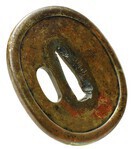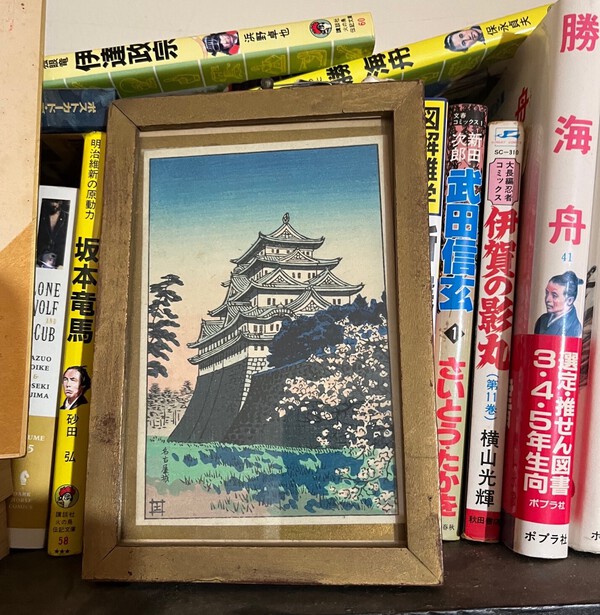-
Posts
2,458 -
Joined
-
Last visited
-
Days Won
21
Content Type
Profiles
Forums
Events
Store
Downloads
Gallery
Everything posted by Toryu2020
-
Jeremy et al The rules are well understood though maybe not well documented in English. Banzashi, what you wore in official duty was set by the Shogunate, even so there was lots of flexibility in how you met those rules. (within certain constraints) The length of Daito was proscribed so we see lots of 2.3.5 Shaku swords. Red Saya were reserved for certain groups - white tsukaito was reserved for certain groups. Hizen retainers were encouraged to copy the Kassen koshirae worn by their lord in every detail excepting the menuki which could NOT be catfish like that of Sansai. Satsuma swordsmen made a point to sport swords longer that the proscribed length and garish red Saya in direct contravention of the rules. There are concrete examples, it is not all speculation. What you wore to work was prescribed what you wore on your own time could be just about anything you wanted albeit operating in a highly fashion conscious and strictly stratified society... -t
-
Simon - keep in mind, in those days the bloke that could adjust your seppa was just around the corner and his work was dirt cheap! -t
-
Int the Sengoku-jidai you maybe had one sword - issued by your lord and carried whatever he gave you. In the Edo period it all depended on your income - you might have four tsuba, one for each season - or four koshirae with different tsuba for work, play, practice and combat. The more money you had the more you were able to show off your money with your accoutrement. By the Bakumatsu people shared tsuba as gifts and collected and traded them much as we do today. IMO the tsuba does little for the balance of a blade unless the weight is significant - a practiced swordsman can adjust to most any blade... -t
-
I have to wonder what books you all started with if the posted list is full of information we can't use unless we can read in a new language or have a teacher to guide us? Jeremy - stick with the list - try ti get the terminology down - yes you will need to see good examples to truly understand and yes you will need someone to point some of it out to you BUT believe me there is tons you can learn from these primers before you need to dive deeper and before you need to apprentice yourself to some "teacher." Ignore the noise, enjoy the journey!! -t
-

Dai Token Ichi 2023
Toryu2020 replied to Shogun8's topic in Sword Shows, Events, Community News and Legislation Issues
Typically the first weekend in November - delayed this year because of covid. Announcement should come in the Spring but these days who know? -t -

Sale of fake Nihonto ( for pd report )
Toryu2020 replied to AlphaRaider's topic in General Nihonto Related Discussion
So this is not Harunaka Hoshino? Not sure if we know this guy but we are happy to help if we can - please feel free to message me thru this board or email ncjsc.president@gmail.com -t -

Shinsa from Canada
Toryu2020 replied to bjmoose's topic in Sword Shows, Events, Community News and Legislation Issues
I would recommend Robert Hughes from Saskatoon, now living in Japan and can be found on this board... -t- 1 reply
-
- 1
-

-

Custom made shinken request
Toryu2020 replied to Thomas Anderson's topic in General Nihonto Related Discussion
Robert Hughes can be found on this forum Also Meirin Sangyo can handle orders in English, tell them Big Tom sent you... -t -
Sano Bijutsukan publication - Akasaka tsuba 1990 Sano Bijutsukan publication - Sukashi Tsuba 1999 both should be readily available in Japan -t
-
Original Japanese... https://page.auctions.yahoo.co.jp/jp/auction/q1056384585 Second volume https://page.auctions.yahoo.co.jp/jp/auction/b1062943004
-
I believe you are talking about Tosogu no Kigen, which has not been translated - should be readily available in your furuhonya. Sukashi tsuba was translated and there are two books (gold and silver), the Japanese editions are less expensive and easier to come by... -t
-
You should also invest in the "Tosogu Classroom" translations by the NBTHK/AB (Markus) - Volume one covers your subject well. -tch
-
1. Tosogu no Kigen - Sasano 2. Sukashi tsuba - Sasano 3. Akasaka tsuba - Sano Bijutsukan I believe Sano also did a "Sukashi" monograph but I'm not at home so cannot lay my finger on the title. FWIW I think Akasaka is an Edo period school and if you are looking at earlier development you want Kyo-Sukashi and Owari... -tch
-

A cast tsuba [90% sure] with a spurious signature.
Toryu2020 replied to Spartancrest's topic in Tosogu
埋忠明寿 Umetada Myoju... -
You'll want to remove that fuchi and look carefully for the presence of a stamp. May not be traditionally made... -t
-

Oshigata search - Daido
Toryu2020 replied to Toryu2020's topic in General Nihonto Related Discussion
Still looking for oshigata of the "Omichi" smith who worked in Kyoto - and now I am after oshigata of the Heianjo Nagayoshi smith who worked circa Kanbun - plenty of signatures for the Muromachi smith but I am interested in the artist using this signature in the Shinto period. Thanking you in advance, -t -

Indiana Token Kai
Toryu2020 replied to ChrisW's topic in Sword Shows, Events, Community News and Legislation Issues
Support your local sword club! -t














